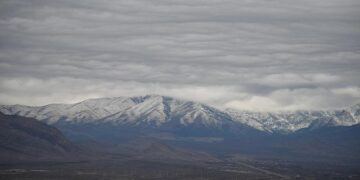Discovering “Science with Sarah: Cloud in a Jar” – An Engaging Journey into Weather Science
In an era where scientific concepts can often feel abstract and intimidating, one dedicated educator is making the marvels of meteorology more relatable. “Science with Sarah: Cloud in a Jar,” showcased on KSAT, invites audiences of all ages to participate in an interactive experiment that clarifies how clouds form, presenting it in an engaging and visually appealing manner. This creative segment merges education with entertainment, sparking curiosity about our environment while deepening comprehension of atmospheric science. Join Sarah as she leads us through this intriguing project, unveiling the surprisingly straightforward process behind cloud formation and motivating young minds to gaze upward and investigate the skies.
Unpacking the Science of Clouds Through Sarah’s Exciting Demonstration
Sarah’s latest demonstration captivates budding scientists by exploring the intriguing process behind cloud creation. Utilizing a simple jar, some boiling water, and several ice cubes, she effectively shows how water vapor evolves into the fluffy structures we observe overhead. This hands-on activity not only engages participants but also conveys vital information about the water cycle and essential conditions for cloud development. By following along with Sarah’s instructions, learners grasp critical concepts such as temperature variations and condensation processes that contribute to cloud formation—transforming complex ideas into enjoyable learning experiences.
As participants engage in this experiment, they become familiarized with important terminology that animates the cloud-making journey:
- Evaporation: The conversion of liquid water into vapor when heated.
- Condensation: The cooling process where vapor transforms back into tiny droplets.
- Precipitation: The release of these droplets as rain or snow.
This interactive method sets a foundation for further exploration into weather systems. To enhance understanding, here’s a concise table summarizing various types of clouds found in our atmosphere along with their characteristics:
| Name of Cloud Type | Main Features | Illustrative Examples | |
|---|---|---|---|
| Cumulus Clouds | Puffy white formations typically seen during clear weather. | Cotton-like clouds floating across blue skies. | |
| Status Clouds | A uniform gray layer covering vast areas like a blanket. | Dreary overcast days accompanied by light rain. | |
| Cumulonimbus Clouds | Tall towering formations linked to thunderstorms. |
Your Guide to Replicating the Cloud-in-a-Jar Experiment at Home!
If you’re eager to ignite curiosity at home, this captivating “cloud in a jar” experiment serves as an excellent illustration of atmospheric processes. To get started on this exciting activity, gather these essential materials:
- < strong>A glass jar (a wide-mouth variety works best)
- < strong >Boiling hot water (to create steam)
- < strong >A plate (to cover your jar)
- < strong >Several ice cubes (for cooling effect)
- < strong >Aerosol spray (like hair spray) for added moisture
The next steps will allow you to witness cloud formation firsthand! Begin by filling your jar one-third full with boiling hot water; then cover it promptly using your plate to trap steam inside. As vapor accumulates within the jar’s confines, place ice cubes atop your plate—this cools down air within effectively! After waiting several minutes give it gentle aerosol spray near its opening; this introduces particles necessary for condensation! Observe closely as fluffy clouds begin forming right before your eyes! This remarkable phenomenon not only illustrates scientific principles but also provides an engaging way for young learners to grasp weather-related concepts!
Grasping Meteorological Principles Behind This Fun Activity!
The “cloud-in-a-jar” experiment is not just entertaining; it’s also an insightful demonstration showcasing fundamental meteorological principles at work! It begins by examining how partaking within Earth’s natural cycles—thew ater cycle . Here warm moist air rises before cooling off leading towards condensation around minuscule particles like dust or pollen present within our atmosphere itself! In conducting this exercise temperature fluctuations play crucial roles too: heating up liquid creates steam which fills available space above its surface area until cooled air causes condensation resulting ultimately creating mini-clouds—a vivid representation mirroring real-world phenomena occurring high above us daily!
This activity further emphasizes techniques utilized by meteorologists when predicting weather patterns accurately too! Instruments such as hygrometers (measuring humidity levels) alongside barometers (monitoring atmospheric pressure) provide invaluable data helping scientists understand conditions conducive towards forming those very same clouds we see outside every day too!! Below lies another table summarizing key meteorological terms relevant towards understanding their relationship concerning creating those beautiful formations up there:
< Strong >Concept< / th > < Strong>Description< / th > Humidity< / td > The quantity representing moisture content present throughout surrounding air.< / td > Condensation< / td > The transformation whereby gaseous state reverts back becoming liquid droplets.< / td >














![[News] Japan Develops 10nm Nanoimprint Technology, with Potential to Tackle EUV Bottleneck – TrendForce](https://earth-news.info/wp-content/uploads/2025/12/329851-news-japan-develops-10nm-nanoimprint-technology-with-potential-to-tackle-euv-bottleneck-trendforce-360x180.jpg)
















